


C57BL/6-Ctla4tm1(CTLA4)Bcgen/Bcgen • 110011
| Product name | B-hCTLA4 mice |
|---|---|
| Catalog number | 110011 |
| Strain name | C57BL/6-Ctla4tm1(CTLA4)Bcgen/Bcgen |
| Strain background | C57BL/6 |
| NCBI gene ID | 12477 |
| Aliases | CTLA4 (cytotoxic T-lymphocyte-associated protein 4) |
on this page
Gene targeting strategy for B-hCTLA4 mice.
The exon 2 of mouse Ctla4 gene that encode the extracellular domain was replaced by human CTLA4 exon 2 in B-hCTLA4 mice.
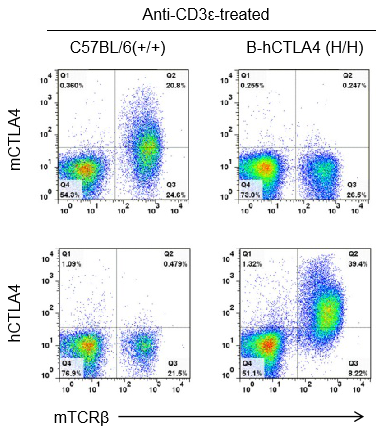
Strain specific CTLA4 expression analysis in homozygous B-hCTLA4 mice by flow cytometry. Splenocytes were collected from WT and homozygous B-hCTLA4 (H/H) mice stimulated with anti-CD3ε in vivo, and analyzed by flow cytometry with species-specific anti-CTLA4 antibody. Mouse CTLA4 was detectable in WT mice. Human CTLA4 was exclusively detectable in homozygous B-hCTLA4 but not WT mice.
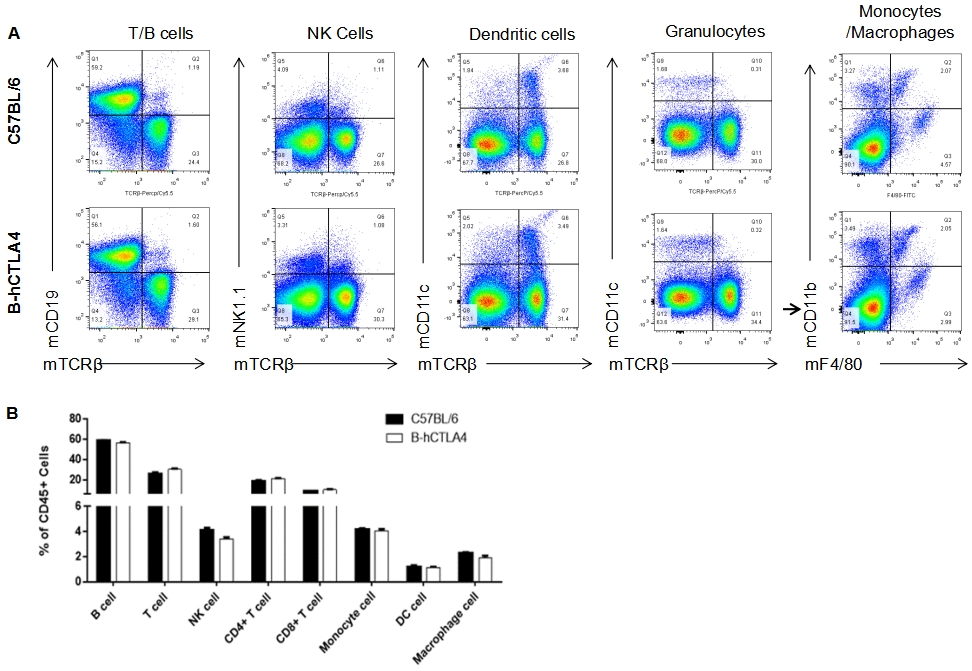
Analysis of spleen leukocyte subpopulations by FACS.Splenocytes were isolated from female C57BL/6 and B-hCTLA4 mice (n=3, 6-week-old). Flow cytometry analysis of the splenocytes was performed to assess leukocyte subpopulations. A. Representative FACS plots. Single live cells were gated for CD45 population and used for further analysis as indicated here. B. Results of FACS analysis. Percent of T, B, NK, Monocyte, DC and macrophage cells in homozygous B-hCTLA4 mice were similar to those in the C57BL/6 mice, demonstrating that introduction of hCTLA4 in place of its mouse counterpart does not change the overall development, differentiation or distribution of these cell types in spleen.
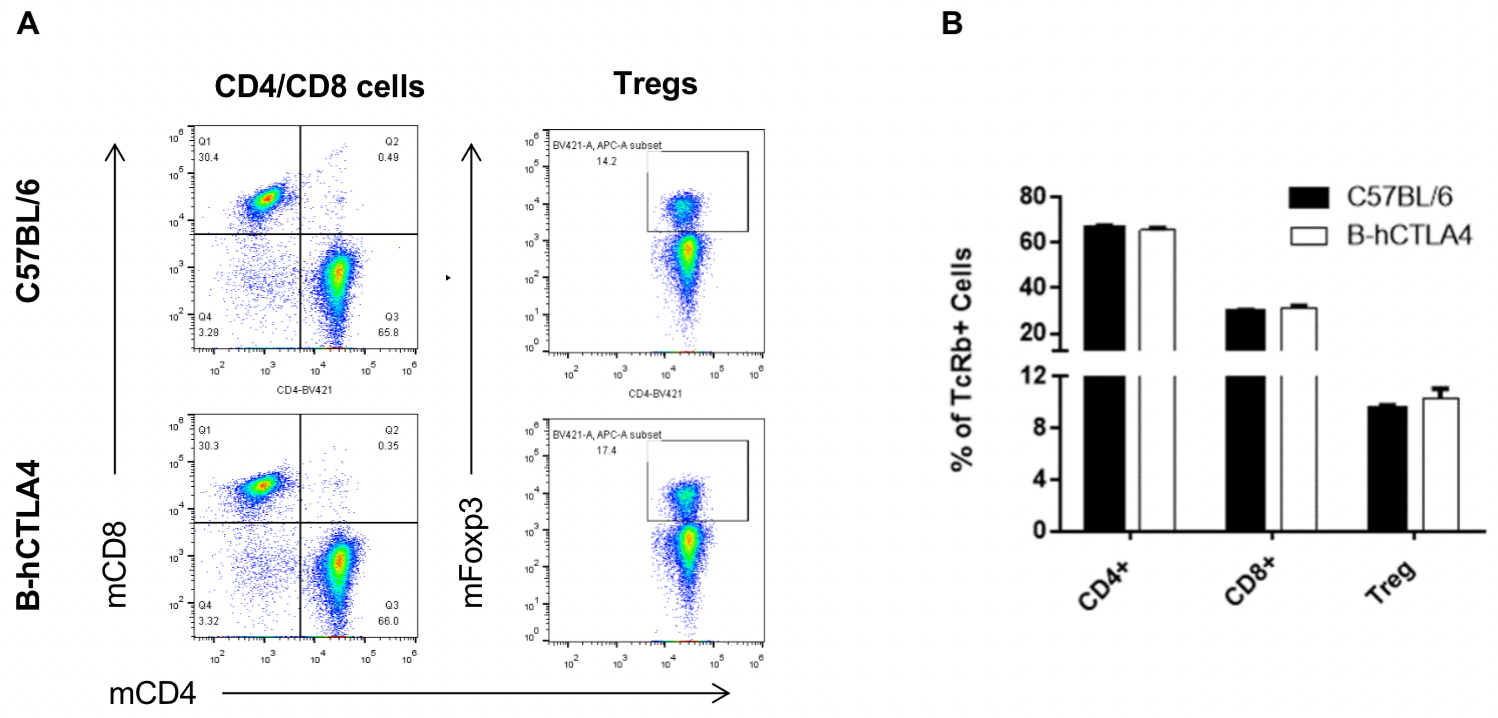
Analysis of spleen T cell subpopulations by FACS.Splenocytes were isolated from female C57BL/6 and B-hCTLA4 mice (n=3, 6-week-old). Flow cytometry analysis of the splenocytes was performed to assess leukocyte subpopulations. A. Representative FACS plots. Single live CD45+ cells were gated for CD3 T cell population and used for further analysis as indicated here. B. Results of FACS analysis. Percent of CD8, CD4, and Treg cells in homozygous B-hCTLA4 mice were similar to those in the C57BL/6 mice, demonstrating that introduction of hCTLA4 in place of its mouse counterpart does not change the overall development, differentiation or distribution of these T cell subtypes in spleen. Values are expressed as mean ± SEM.
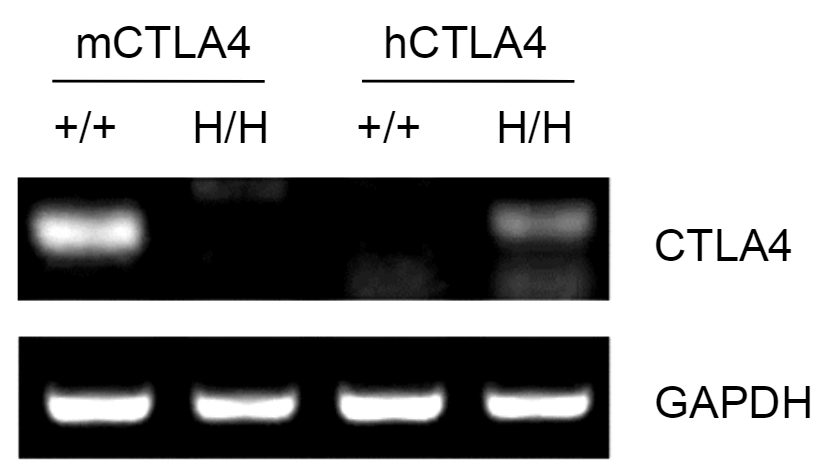
Strain specific analysis of CTLA4 gene expression in WT and hCTLA4 mice by RT-PCR. Mouse Ctla4 mRNA was detectable only in splenocytes of wild-type (+/+) mice. Human CTLA4 mRNA was detectable only in H/H, but not in +/+ mice.

Antitumor activity of anti-human CTLA4 antibody in B-hCTLA4 mice. (A) Anti-human CTLA4 antibody inhibited MC38 tumor growth in B-hCTLA4 mice. Murine colon cancer MC38 cells were subcutaneously implanted into homozygous B-hCTLA4 mice (female, 6-7 week-old, n=5). Mice were grouped when tumor volume reached approximately 100 mm3, at which time they were treated with ipilimumab with doses and schedules indicated in panel. (B) Body weight changes during treatment. As shown in panel A, ipilimumab (in house) was efficacious in controlling tumor growth in B-hCTLA4 mice, demonstrating that the B-hCTLA4 mice provide a powerful preclinical model for in vivo evaluation of anti-human CTLA4 antibody. Values are expressed as mean ± SEM.

Complete blood count (CBC). Blood from female C57BL/6 and B-hCTLA4 mice (n=3, 6-week-old) was collected and analyzed for CBC. There was no differences among any measurement between C57BL/6 and B-hCTLA4 mice, indicating that introduction of hCTLA4 in place of its mouse counterpart does not change blood cell composition and morphology. Values are expressed as mean ± SEM.
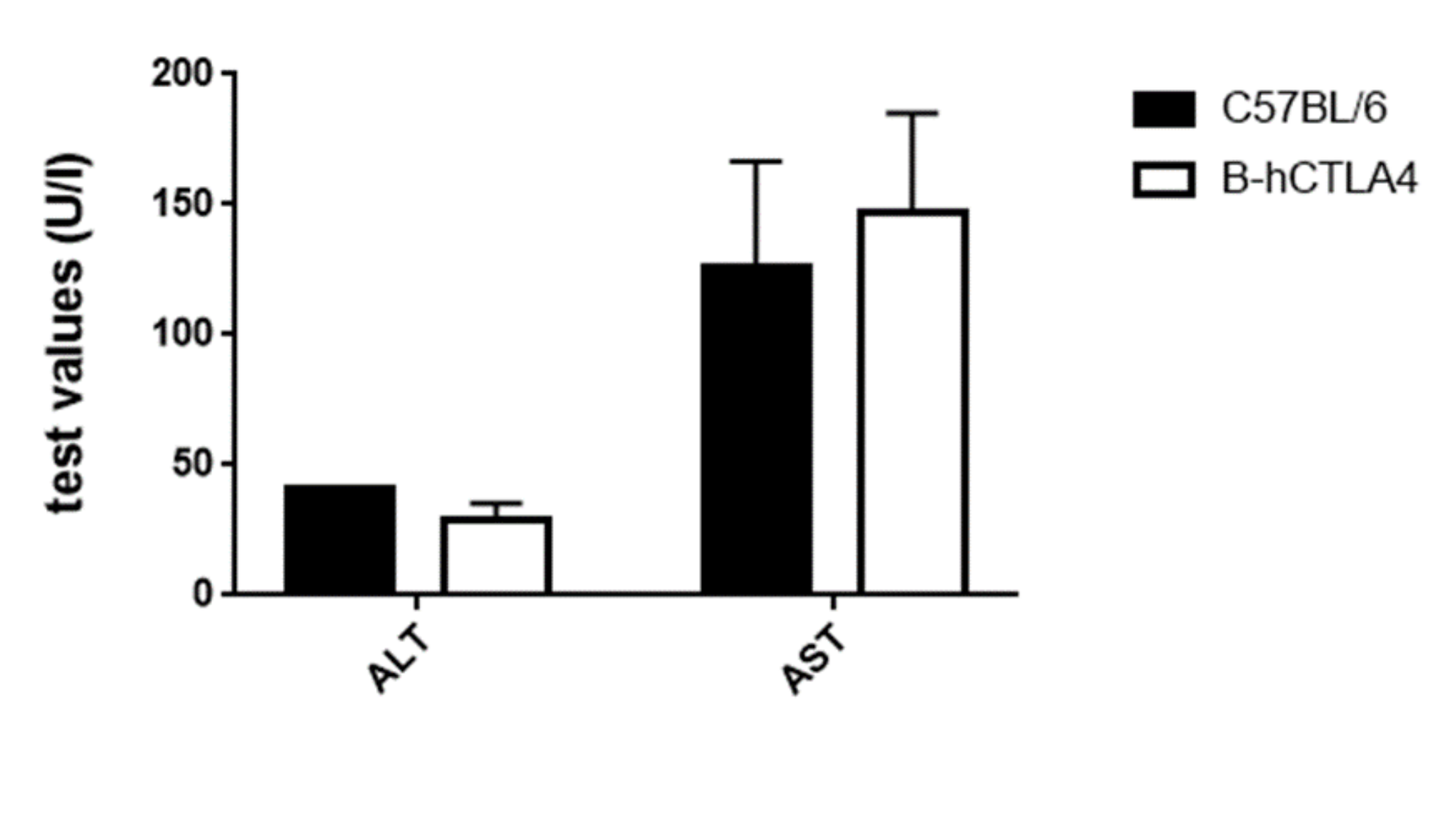
Blood chemistry tests of B-hCTLA4 mice. Serum from the C57BL/6 and B-hCTLA4 mice (n=3, 6-week-old) was collected and analyzed for levels of ALT and AST. There was no differences on either measurement between C57BL/6 and B-hCTLA4 mice, indicating that introduction of hCTLA4 in place of its mouse counterpart does not change ALT and AST levels or health of liver. Values are expressed as mean ± SEM.